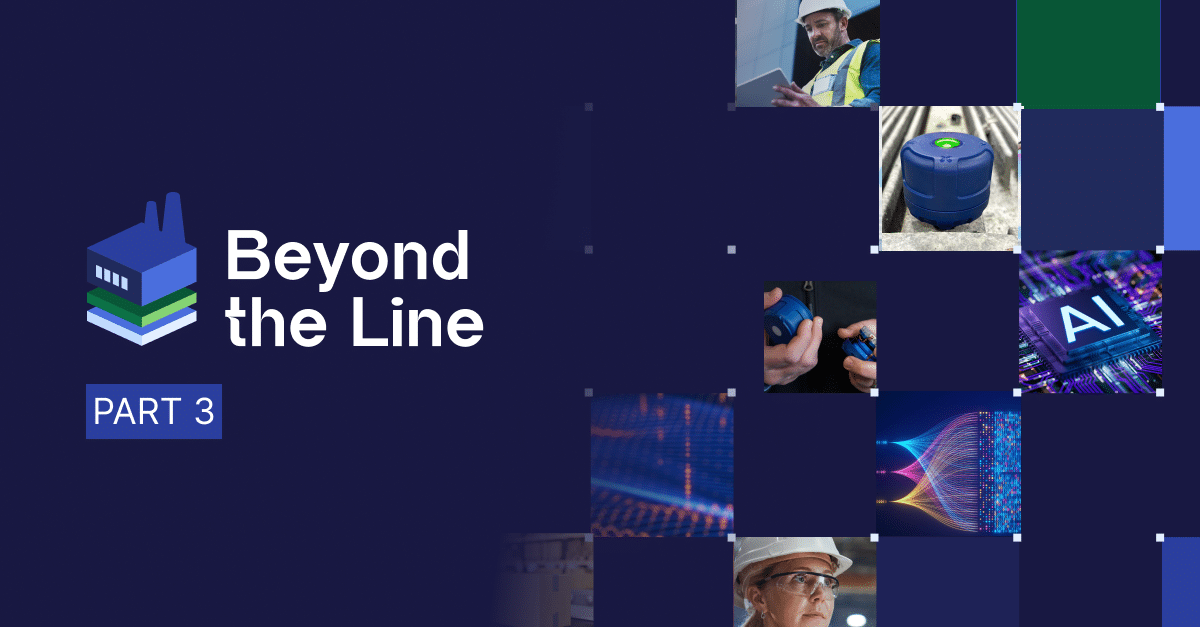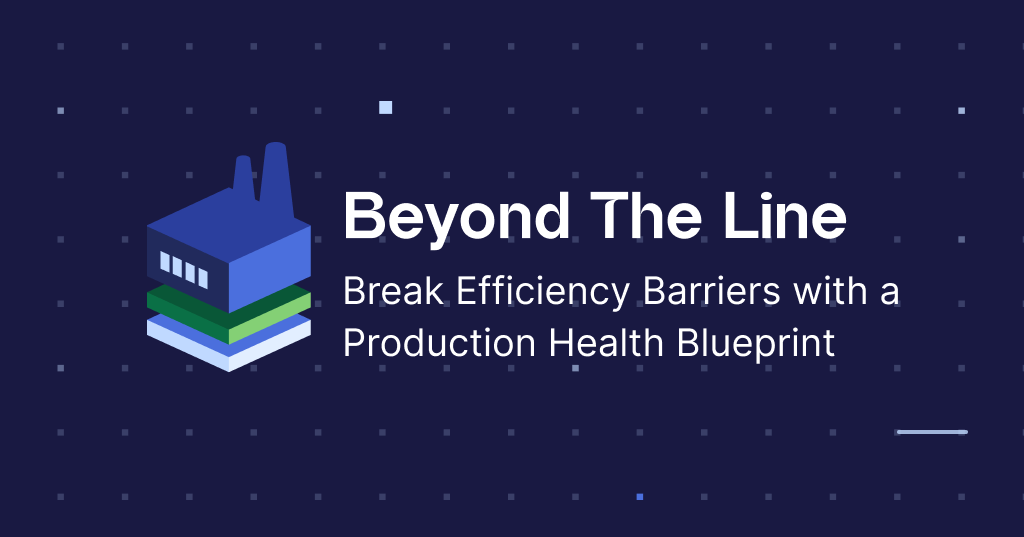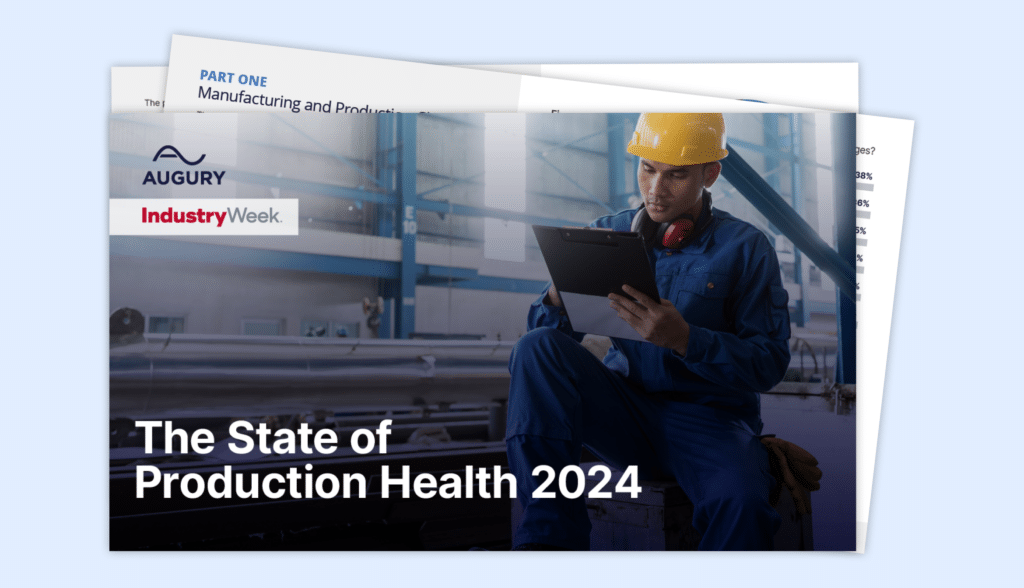
As a lead-up to Augury’s Beyond The Line event on June 18th 2024, Augury Co-Founder and CEO Saar Yoskovitz presents a three-part series on how new technologies are aligned to help manufacturing meet its many different, and often conflicting, goals. In parts 1 and 2, Saar summarized the ongoing challenges and emerging solutions. Now, he outlines the required capabilities manufacturers need to flourish in this new era of data-centric manufacturing.
Let’s do a quick recap! We started with ‘The Manufacturer’s Nightmare’, in which we presented a dreaming golfer who realizes his old bag of golf clubs can no longer make him a winner in today’s modern world. And yes, that golfer represents today’s manufacturers who wonder how they can deliver the massive leaps in efficiency, sustainability, quality, and flexibility needed to meet the demands of their customers, investors, and employees.
In part two, we showcased ‘A New Bag Of Tricks’ – those macro trends in technology and the workforce that are now creating tremendous opportunities for manufacturers. Indeed, a new set of clubs exists that will help turn many of the rosiest promises of the past years into practical solutions – and do things manufacturers previously only dreamed of.
Ready for the next era of efficiency?

But how do manufacturers apply those trends to bring this dream to life? How do they create a blueprint for themselves and their strategic vendors to ensure they have the digital infrastructures, new work processes, and highly skilled teams they need to win?
We will now address these questions.
Capturing The Magic: Think Capabilities, Not Products
Step one: you need to realize that no one can predict all the answers. A strategy for manufacturing crafted even a few years ago, for example, would not have embraced the emerging power of generative AI platforms such as ChatGPT – much less, Chat GPT 4.0. It would have underestimated the advances being made by smaller startups and emerging leaders in applying Machine Learning, AI, and data engineering to basic but crucial challenges such as energy management, asset reliability, and process optimization.
“Step one: you need to realize that no one can predict all the answers.”
The key is to think about general capabilities, not specific products. And, here are the five capabilities that must be built into the emerging digital ‘tech stacks’ of successful manufacturers:
Five Required Capabilities for Digital Success
1) Infrastructure: Reliable Sensing And Computing – From Cloud To Edge
The modern foundation for AI-driven manufacturing will need to be cloud-based. Only by aggregating massive volumes of data can AI models evolve quickly enough and become trustworthy enough to be used confidently in manufacturing. The Cloud is ideal for this task.
But while models might be built and trained in the Cloud, real-time insights needed for autonomous production optimization will also require work to be done much closer to the manufacturing process. In other words, computing power needs to extend from the Cloud all the way to the Edge – namely, the assets themselves and even the sensors that are collecting and analyzing the vast amounts of data already generated by modern manufacturing systems.
AI processing at the Edge not only reduces cost but also increases speed. This way, changes to processes or spotting risks to assets or people can be done in minutes and executed in real-time on the plant floor – and not discovered days later through some centralized data science exercise.
“But while models might be built and trained in the Cloud, real-time insights needed for autonomous production optimization will also require work to be done much closer to the manufacturing process.”
Integrations must be ubiquitous. This is not just about moving data from one place to another, but also integrating disparate tools to take advantage of raw data and insights generated by other systems in the manufacturer’s overall technology stack.
2) Insights: Agility in Data Collection and Sharing
Manufacturing systems will throw off ever more data as sensing becomes more ubiquitous and affordable. This will feed more powerful and accurate AI systems and give the people who use them deeper, more effective insights into the tactics needed to optimize manufacturing.
But as data volumes grow and analysis becomes more real-time, data collection itself will need to become more responsive. Rather than fixed sensing at regular time intervals, sensing regimes must be more dynamic. For example, you might want to increase or vary your data collection when indications suggest deeper analysis is required or when you want to respond to certain behaviors of machines or processes. To do that, AI engines have to create models at the speed of production – which means in a matter of hours and not months.
Like the ‘gain’ function on a radar, which can be turned up or down to achieve greater accuracy or reduce unnecessary signals, sensing depth and power should be variable to match the depth of insight to the task at hand. This will help control costs, reduce bandwidth requirements, and create new opportunities for analysis.
“The added context provided by a more diverse array of data types will mean faster and more confident decision-making by people and the digital systems that support them.”
3) Coverage: Everywhere And Beyond
A) Multidimensionality Of Insights And Data Sources
Just as with a self-driving car finding its way through a combination of data sources and sensors (GPS inputs, on-board cameras, LiDAR systems, etc), the AI-driven processes that will help manufacturers navigate complex process changes and asset management strategies will benefit from more and more sources and types of data. The added context provided by a more diverse array of data types will mean faster and more confident decision-making by people and the digital systems that support them.
This scenario is already emerging in areas such as Machine Health, where classic data inputs such as vibration or temperature are now being augmented with external processes and factors, such as input pressure for water or materials, environmental conditions like humidity, and even the specific SKU being run at any given time.
All of this can help get better insights into machine performance and reliability. Hence, manufacturers should ensure they’re architecting strategies to embrace and demand these integrated data collection and analysis approaches. Here, it will be particularly important to break down insights and contexts into four functional levels:
Forensic: Data and context that help determine after an event what caused it to occur
Predictive: Data and insight that can identify with high accuracy when an event will occur
Prescriptive: Data and insight that can predict an event and provide the best means of intervention to prevent negative outcomes and maximize positive ones
Proactive: Data and insight that’s trusted enough to also autonomously give commands or adjust systems or processes to prevent negative outcomes and maximize positive ones.
B) Broad Instrumentation And Coverage
The manufacturing process is an incredibly complex and integrated effort involving tens or hundreds of mechanical components, raw materials with constantly varying characteristics, and changing goals (cost optimization, throughput, quality, etc).
Data will also need to come from everywhere to make insight-driven manufacturing a full success. Every machine type and all key subprocesses will need to be instrumented and understood, and those data sources will need to be brought together into a holistic view of the end-to-end process.
“Leading manufacturers will harness that power to be able to adjust processes in real-time, within individual shifts, and continually tune the mix and behaviors of machines, materials, and even work processes to get the desired outcome every time.”
C) Holistic Approaches To Assets, Processes, And People
Manufacturers will need to be able to see all the elements of a process through a digital lens. Basically, this involves taking the ‘digital twin’ concept to a whole new level.
Capturing and understanding the interrelationships between the hundreds or thousands of variables that exist in any manufacturing operation will be essential for optimizing overall production. Long the ‘holy grail’ of manufacturing, that end-to-end visibility can become a reality today due to the intersection of technology trends outlined above. Leading manufacturers will harness that power to be able to adjust processes in real-time, within individual shifts, and continually tune the mix and behaviors of machines, materials, and even work processes to get the desired outcome every time.
Domains of work that are isolated today (such as asset management not being connected to process optimization, or operating parameters not being able to incorporate changes in weather or raw materials compositions, etc) will come together to enable higher-order decision-making by truly cross-functional teams.
“Manufacturers must have a culture and rewards system that attracts and retains a new generation of digitally native workers while providing the training and opportunities that keep their current expertise in-house and motivated.”
4) Engagement: Digital-Ready Workers and Culture
While all these technological advances create the opportunity for a new era in manufacturing effectiveness, in the end, it will, as always, come down to the people who use them. Manufacturers must have a culture and rewards system that attracts and retains a new generation of digitally native workers while providing the training and opportunities that keep their current expertise in-house and motivated.
While worker, product, and environmental safety will remain paramount, the speed of innovation will become more critical. Manufacturers will need to understand where they can take greater risks and where they can even afford to ‘fail fast’ to try out new approaches and tools.
The decentralized decision-making prevalent at many manufacturers will need to evolve. The benefits of data-driven manufacturing will be amplified by scale. With more data flowing in and insights flowing out, learning will be accelerated – along with the flow of benefits for all the processes and plants across a portfolio.
And as the individual manufacturer tweaks its in-house capabilities, the external world must also lend a hand…
“The winning manufacturers in this new era will not be the ones who try to work in islands, but those who see the benefits of connectivity and data sharing.”
5) Ecosystem: Long Live Not Living On An Island
Data sharing across supply chains, with OEMs and other partners (and even aggregated data sharing, in anonymous ways, between competitors) will deliver even greater benefits due to the rapid improvement it can drive in AI models and algorithms.
The winning manufacturers in this new era will not be the ones who try to work in islands, but those who see the benefits of connectivity and data sharing. Speed of innovation and the courage to move quickly will outweigh the traditional benefits of secrecy and proprietary thinking.
The Lean Dream Coming True
And of course, all these capabilities interact and build on each other. With data finally breaking down silos between work functions, the full power of concepts in lean manufacturing, TPM, or similar models will finally be able to be realized.
Just as IT operations and application security eventually fused with software development to shorten cycle times, reliability, process engineering, and other functions can come together in one integrated approach to optimizing manufacturing.
So, let’s revisit that golfer’s nightmare in the first post… He’s standing at the first tee and realizing all their once trusty clubs were either gone or useless. However, with this new set of capabilities in place, his nightmare can turn into the dream scenario where the bag is full of a new set of clubs – designed with AI precision, crafted of the latest materials, and proven in the hands of the world’s best experts. Now, that’s the manufacturing world we can build for the future.
In other words, as with golf, we can now enter the zone.
Read Part 1 of Beyond The Line: ‘The Manufacturer’s Nightmare’
Read Part 2 of Beyond The Line: ‘A New Bag Of Tricks’
Ready for the next era of efficiency?







